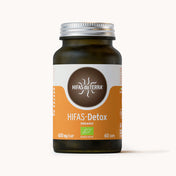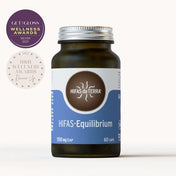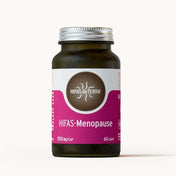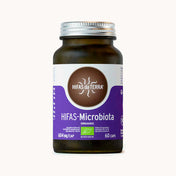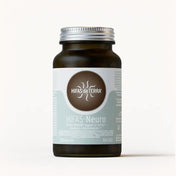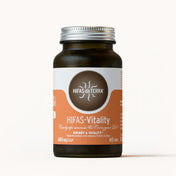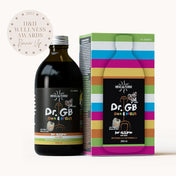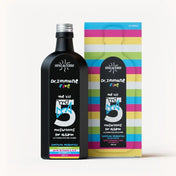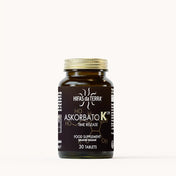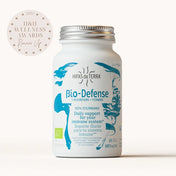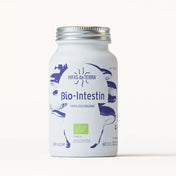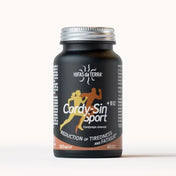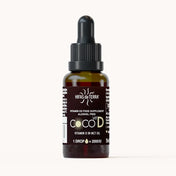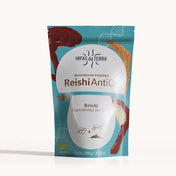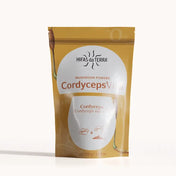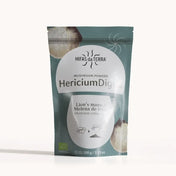Table of Contents
In the world of medicinal mushroom products, it is common to find concentration references such as 4:1, 15:1 on the labelling. However, despite their widespread use, few of us understand the importance of this reference. As a company with expertise in the mycotherapy field, we've put together this article to help you understand.
Understanding Extraction Ratios in Mycotherapy
On the packaging of many Mycotherapy food supplements, the extraction ratio, also known as the concentration ratio, establishes a link between the quantity of raw material andthe RESULTING extract. For example, a ratio of 15:1 translates to 15 grams of mushrooms is needed to produce 1 gram of extract.
Laboratories often use extraction ratios as a selling point for their products. At first glance, a high extraction ratio implies a more concentrated extract, potentially richer in beneficial compounds than a product with a lower ratio.
These ratios are also used to justify the price to the consumer, because a product with a higher ratio logically implies a higher quantity of bioactive molecules, right? Not quite, we'll explain.

Limits to the extraction ratio
Most consumers think that a higher concentration ratio means a more robust product, but this actually depends on several factors:
What ratio are we talking about?
It is crucial to know what concentration ratio we are talking about. For some producers, the ratio corresponds to the quantity of fresh mushrooms compared to the quantity of powder. While for others, the starting point is the quantity of mushroom powder required to make an extract. In the first case, the mass of fresh mushrooms includes naturally occurring water, while in the second, it is excluded.
However, some mushrooms contain a significant amount of water. For example, drying/dehydration can remove up to 90% of the water from a mushroom like Agaricus blazei, providing a ratio of 10:1, without going through the extraction process. Without extraction, the secondary metabolites remain trapped in the chitinous matrix of the fungus, rendering these bioactive molecules non-bioavailable.

What kind of extraction are we talking about?
To obtain a full extract from a mushroom, an extraction process is required. This can be done using either water or alcohol as the solvent, or a combination of both. The choice of method depends on the specific mushroom and the polarity of the active compounds within it.
In mycotherapy, it is generally recommended to use a double extraction process, combining both water and alcohol (known as hydroalcoholic extraction), rather than a single extraction method. This approach is preferred because water extraction alone captures hydrophilic (water-loving) molecules like beta-glucans, while alcohol extraction can extract other compounds, such as triterpenes. Additionally, the solvents used during extraction are removed, ensuring the final product is safe for consumption.
Although a double extraction can yield a larger quantity of powder, it may sometimes result in a lower concentration ratio compared to water extraction alone. However, this does not imply that water extraction is more potent. In fact, double extraction is often more effective because it extracts a broader range of components.
At Hifas da Terra, our extensive experience of over 20 years in the domain of medicinal fungi and extraction methodologies, coupled with rigorous analytical evaluations, allows us to ascertain the optimal extraction technique, whether hydroalcoholic or water extracted. This determination is based on the chemical properties of the target compounds, particularly their hydrophilicity, which dictates their solubility and subsequent concentration in the specific fungal extract.
One solution: the composition of bioactive molecules
In short, relying solely on a simple ratio indicator is not enough to assess the quality of a medicinal mushroom food supplement.
To obtain meaningful information, it is essential to have a detailed breakdown of the bioactives on the label. In line with our "golden rules" for recognising a quality mycotherapy product, careful analysis of the labelling is crucial. What really counts is the quantity of bioactive molecules mentioned on the label, as well as the bioactive compounds specific to the mushroom, such as cordycepin from Cordyceps, inotodiol/ betulin found in Chaga, and grifolan present in Maitake. To be certain, analytical tests on the bioactive compounds and measuring purity, are necessary.
Care should also be taken when quantifying the concentration or percentage of non-specific active ingredients, such as polysaccharides. At Hifas da terra, we prefer to specify fungal beta-glucans (1.3/1.6), which have been recognised scientifically for their immunomodulatory function.
Studies in the European and American markets have revealed serious shortcomings in terms of traceability. The above process also protects the consumer against the risk of buying a counterfeit product.
Without a robust analysis of the specific bioactive molecules and displaying their concentrations on labelling, consumers have no guarantee that they are getting a mushroom-based product, let alone a Mycotherapy product.

Hifas da Terra: a leading biotech company
As an expert biotech company with 25 years of experience, our commitment is to design a specific manufacturing process for each mushroom, considering its unique characteristics. Each mushroom has differing bioactive molecules, making it necessary to develop unique processes to get the most from them.
https://vimeo.com/993447024/1156fba55b?share=copyThis is precisely what we strive to do through the in-depth quantitative analyses of our fungal strains. Analysis such as this enables us to better understand the bioactive profiles of each fungus and to design extraction and production approaches tailored to their specific characteristics.
To guarantee the quality and consistency of our products, we rigorously apply our quality management system, known as the "Hifas Quality System". This system allows us to control every stage of the production process, from the cultivation of the mushrooms to the formulation of the final products, to ensure that our customers always receive products of the highest quality and purity.
